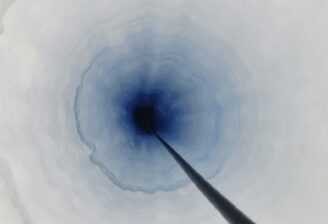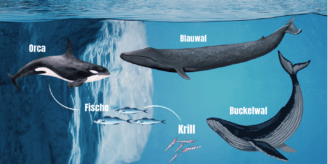Tools for acoustic biodiversity assessment and acoustic habitat quality
Given the current increase in habitat loss in marine environments, the need for an efficient measure with which communities can be monitored is becoming more and more urgent. Passive acoustic methods are a highly effective and non-invasive tool to monitor species presence of sound-producing species in underwater environments.
Our work explores how passive acoustic recordings and acoustic metrics can be used to rapidly extract information on aquatic acoustic diversity, species assemblage rules and community structure.
Further work evolves around the development of new measures for a hitherto virtually neglected marine ecosystem property: the acoustic quality of underwater habitats. Increased anthropogenic underwater noise is of rising concern, as this has been shown to affect many marine animals, ranging from large mammals to bottom dwelling invertebrates. The passive use of sound plays a major role as information source for many aquatic animals, whereas active sound is used for communication purposes in many species. The presence of background noise can therefore have significant adverse effects on communities, fitness and populations. Assessing underwater acoustic habitat quality will involve mapping of both natural and anthropogenic sound sources from a (virtually) acoustically pristine and affected area to examine how patterns in species composition differ in relation to noise budget.
Our team for Marine Acoustic Underwater Diversity (MAUD)
Ilse van Opzeeland
BioacousticianNews and articles on the topic
Reviving PALAOA or the Acoustic Homecoming
Slowly the impressive lance sinks into the ice. It reminds of a Jules Verne-like scientific instrument in the way its copper plates are bolted so craftfully. It is attached to an enormous installation with howling diesel-powered engines that breathes a slow primitive power. Maybe exactly the type of primitive power and patience that is needed to melt through 100m thick shelf ice. We are in the Antarctic standing on the Eckstroem Iceshelf and we are melting holes to finally revive our passive acoustic observatory after a 2-year data gap due to an ice shelf break off in February 2022.
Insights into Marine Biodiversity Research – Lectures for Pupils
Two detailed presentations (held in German), developed by two young scientists, enable teachers to find an exciting introduction to the topic of marine biodiversity with their pupils. Specifically, they deal with whale research, the food web in the Antarctic and the special ability of whales to hear and utilise sound waves.
Mirrors – Following the Acoustic Journey of the Minke Whale
Mirrors is a sound installation that follows the acoustic journey of the Minke Whale as it travels from Antarctica to Namibia. A collaboration between artist-researcher Geraint Rhys and Marine Acoustic scientist Dr Ilse van Opzeeland it charts how the vocalizations of the Minke changes with a change in location as it migrates across the oceans.



